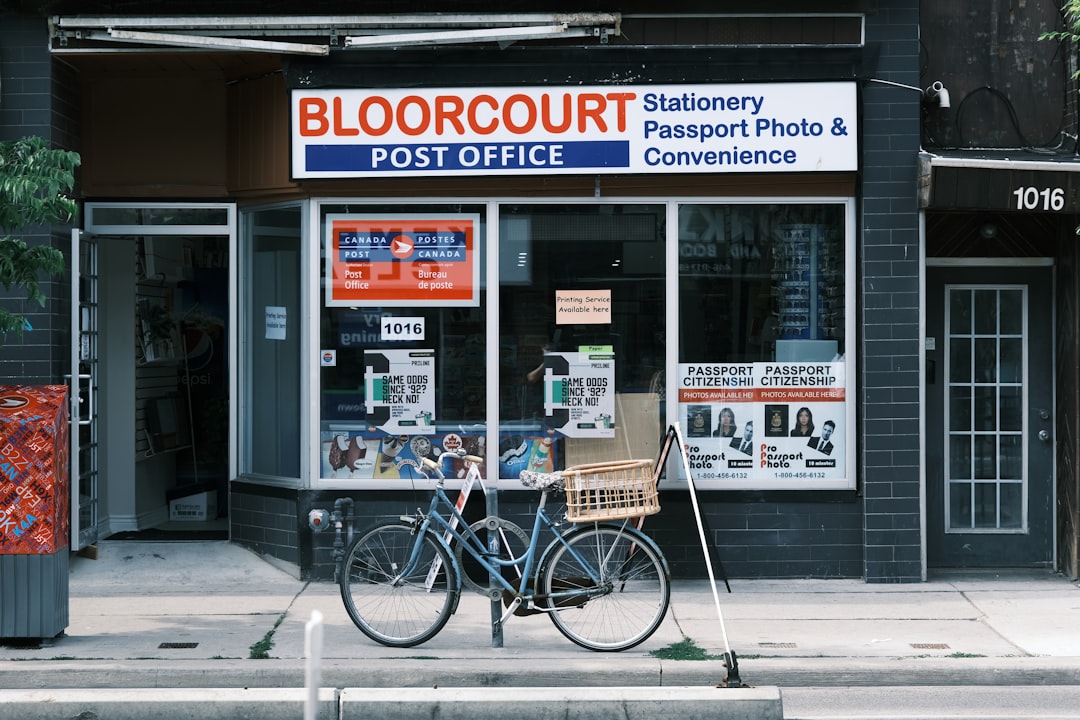Shopify B2B: Net Terms, Catalogs, Quote-to-Order
Run Shopify B2B on one store. Learn net terms, custom catalogs, and quote-to-order workflows that scale wholesale revenue. Step-by-step playbook inside.

Narayan Chaudhary
Narayan Chaudhary
May 5, 2024

Shopify B2B Without a Second Site: Net Terms, Custom Catalogs, and Quote-to-Order Workflows That Scale Wholesale Revenue
B2B buyers now expect the same speed and convenience they get as consumers, plus trade-specific capabilities like net terms, buyer-specific price lists, and fast quote-to-order flows. It is no longer a theoretical wishlist. According to McKinsey’s 2024 B2B Pulse research, e-commerce has become the top revenue channel for sellers that offer it, delivering 34 percent of revenue, while more than half of buyers will switch suppliers if their omnichannel experience is clunky. The study also notes buyers use roughly ten interaction channels across a journey, making a seamless on-site and off-site experience essential. The report is clear: as McKinsey writes, e-commerce is now “indispensable.”
If you are running Shopify already, you do not need to spin up a separate wholesale site to meet those expectations. Shopify B2B lets you run DTC and B2B through a single admin and storefront, then segment experiences and pricing by company, market, or buyer role. In this Byte & Buy playbook, you will set up net terms, custom catalogs, and efficient quote-to-order workflows inside one store, and you will do it in a way that scales revenue and reduces manual AR load.
Why one Shopify store is enough for B2B and DTC
A blended store is Shopify’s term for running B2B and DTC in one admin. Shopify’s guidance on choosing a store type explains that a blended store uses shared inventory and a single theme while letting you customize products, pricing, discounts, payment methods, shipping, taxes, and content per customer type. You gate B2B pricing and assortments behind customer accounts, and you can vary experiences by region using Markets.
Using one store protects your domain equity and keeps your team from rebuilding integrations twice. Shopify’s B2B feature overview details how to assign companies and locations, segment with Markets, and control catalogs and checkout rules for wholesale buyers without a second site. For Byte & Buy members who want to prioritize high-impact UX on a single stack, our guides on checkout copy that converts and high-performing PDP patterns show where to focus content and layout to lift B2B order completion too.

Custom catalogs: targeted assortments and pricing you can maintain
Wholesale hinges on buyer-specific pricing and curated assortments. Shopify’s catalogs let you create product lists with fixed prices or percentage adjustments, then assign those catalogs to B2B markets or individual company locations. The catalogs documentation explains how to include or exclude products, set fixed prices per SKU or variant, and stack rules like volume pricing and minimums.
Two details matter for scale. First, catalogs support CSV import and export, which means your team can manage thousands of SKUs in a spreadsheet, then import changes in bulk. The CSV specification supports fields for fixed prices, compare-at prices, publish flags, quantity increments, minimum and maximum order quantities, and up to ten quantity breaks per variant. Second, a company location can have multiple catalogs. When overlaps occur, Shopify automatically shows the lowest price per item while applying quantity rules from the catalog that owns that lowest price. The assignment rules make it practical to layer national pricing on a market and a special price list on a single distributor location.
This is where pricing strategy pays off. If you are not yet anchoring B2B price breaks or bundling SKUs by job-to-be-done, our members-only 2025 pricing playbook covers how to deploy anchors, bundles, and urgency credibly in wholesale contexts.
Net terms that convert buyers and protect cash flow
In B2B, payment terms are a conversion driver. Hokodo’s 2024 buyer research found that 83 percent of B2B buyers will abandon a purchase if payment terms are not available. The same study highlights expectations for fast credit decisions, with 19 percent of buyers expecting instant terms on a first purchase.
Shopify B2B lets you assign net terms at the company or location level. The payment terms documentation supports Net 7, 15, 30, 45, 60, and 90, plus due on fulfillment and due on receipt. For negotiated jobs, you can even set a fixed due date on a draft order. Deposits are supported too. You can require a percent-based deposit for orders on terms, either globally per company location or on specific draft orders, and Shopify will mark the order Partially paid once the deposit is captured.
Payment operations are practical. Buyers can store a vaulted credit card to pay down terms from their customer account, your team can charge a saved card after confirming a draft, and you can send due-date payment reminders with Shopify Flow. For more complex logic, the Payment Customization Function API lets partners or internal teams build dynamic term rules based on cart or buyer criteria.
According to Shopify’s B2B features overview, you can also offer manual payment methods like bank transfer for terms orders, accept partial payments, and generate invoices from drafts. The point is to offer the flexibility buyers expect while keeping collection and reconciliation manageable for finance.
Quote to order: use draft orders and price locks instead of a separate quoting app
A clean quote-to-order process is possible on a single store. Shopify lets you require certain B2B locations to “Submit all orders as drafts for review.” The checkout settings guide details the flow. When you enable this, buyers see a banner that payment is due on confirmation, they can add a purchase order number, and you receive the draft for review.
From there, the draft orders guide outlines the key controls:
Lock product pricing as a quote so future price changes will not alter the agreed rate. The doc shows how to lock or unlock pricing.
Reserve inventory on the draft so stock is held while you finalize a PO.
Add or edit payment terms and deposits on the draft, then email the invoice or charge a vaulted card.
Capture one-time shipping fees or select local pickup on draft confirmation.
This workflow is quote-to-order without a new app or second site. It reads as professional to buyers because it mirrors how they already send POs and expect order holds, and it is operationally friendly to your team because it lives where your orders live.

Self-serve accounts that keep reorders and AR out of your inbox
B2B should be self-serve for everything that does not need a human. Shopify’s customer accounts gate B2B pricing, display order history, support “duplicate past order” reorder, and let buyers pay down outstanding invoices. If your buyers have complex needs, Customer Account UI extensions let you add portal capabilities without replatforming.
On the storefront, two native options make wholesale faster. The Quick order list lets buyers add multiple variants to cart with one click from the PDP. One page checkout is supported for B2B and can be customized with functions to hide consumer-only payment methods for wholesale. The B2B features overview covers both.
Members who want help polishing the last mile should read our fast wins on Shopify checkout copy. Clear microcopy for PO fields, terms language, and deposit explanations reduces friction for first orders and reorders alike.
Ops and data: automation and integrations
B2B growth compounds when routine work is automated and your systems stay in sync. Shopify’s B2B suite includes dedicated Flow triggers and actions to tag B2B orders, send payment reminders on due dates, or route draft approvals to sales. For structured data exchange, Shopify provides B2B APIs and integration endpoints so you can connect ERP, accounting, and CRM. The official apps and integrations guidance highlights that you can bring your own systems and still keep the self-serve wholesale experience on Shopify.
On the analytics side, Shopify’s help docs explain that you can tailor reports to a B2B context. Treat B2B AOV, reorder rate, time-to-approve draft, and DSO as first-class metrics in your dashboard. The Byte & Buy bookmarks section includes member-curated dashboards and templates you can copy.
What the market is telling you about B2B payments and UX
Buyers are vocal and the macro trends are undeniable. The 2024 McKinsey Pulse finds that more than half of decision makers will switch vendors if the omnichannel journey is not smooth, and that e-commerce is the single most effective and highest revenue channel for those offering it. Hokodo’s 2024 survey shows 83 percent of buyers will walk if payment terms are missing and that 86 percent consider payment terms an important dimension in vendor selection. If you needed a signal that net terms, self-serve invoices, and reliable quote flows create revenue, that is it.
At the market size level, the worldwide B2B e-commerce GMV reached $28.1 trillion in 2024 and continued to grow double digits year over year, as summarized in Capital One Shopping’s 2025 review. The buyers, volume, and expectations are already here. Your job is to meet them without making your operations brittle.

When a separate B2B store does make sense
You can do most things on a blended store, but sometimes you should split. Shopify’s store type guide lays out when a dedicated B2B store is the better fit: when you require separate inventory, want to lock the entire storefront behind a B2B gate, need a distinct theme and branding, or have isolated teams running wholesale. If your operations are shared and your assortments overlap, stay blended. If your operations diverge and you need strict separation, go dedicated.
A 30-day rollout that scales without rework
You do not need a nine-month integration project to prove lift. Here is a pragmatic rollout you can execute quickly on one store.
Week 1: Define companies and locations, import buyers, and segment them into a B2B Market. Configure customer accounts and your storefront’s quick order lists for wholesale.
Week 2: Build catalogs and price lists for your top three buyer segments. Use the catalog CSV workflow to set fixed prices, volume breaks, and quantity rules.
Week 3: Turn on payment terms and deposits, enable “Submit orders as drafts for review” for buyers who need quotes, and update your draft invoice template. Add Flow payment reminders.
Week 4: Run a controlled launch with your top accounts. Use price locks in drafts, test vaulted card capture, and refine checkout copy. Then open the program to more buyers.
If you need a fresh Shopify build or want to evaluate pricing as you expand, start a trial of Shopify and use this playbook as your base. And if you want the working templates, examples, and teardown videos our members use to execute faster, join the Byte & Buy membership. New, expert-authored content ships weekly and is built for operators who want quick wins they can ship in days, not weeks.
For access to our gated, step-by-step B2B implementation kit, upgrade your membership at Byte & Buy or go directly to Upgrade. Members can manage access any time in Account; if you are new, start at Sign up or Sign in. If you nerd out on design workflows, cross-link this rollout with our speed builds for landing pages in Figma to Framer in 48 hours.